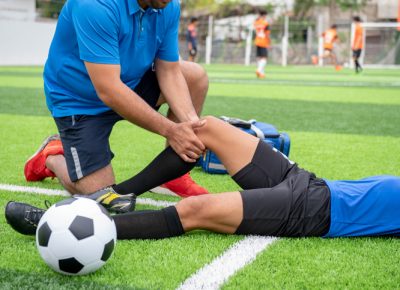Monthly Archives: June 2020
PRP Offers Non-Surgical Sports Injury Treatment

PRP Injections offer a non-surgical sports injury treatment and an alternative to corticosteroid injections. Chronic pain is an issue many people deal with daily, and it can have several different causes. For people that are physically active, sports are a common source of injury. For golfers and racquet sports participants, they even have their own injuries, golfer’s and tennis elbow!
Traditionally, these types of injuries are treated with oral medications (ibuprofen, naproxen, etc), physical therapy and corticosteroid injections. However, for common injuries such as tennis elbow, partial rotator cuff tears, Achilles tendinitis and plantar fasciitis, these treatments often times don’t completely resolve the pain. At that point, many patients are told their only option remaining is surgery.
Surgery as a treatment option provides the potential for complete recovery, but it also carries several significant risks and extended periods of down time, affecting work and exercise routines.
Over the years, several treatments have been developed to help the body regenerate healthy tissue to heal the chronic injuries without surgery. One of these regenerative treatments is platelet rich plasma injection (PRP).
PRP non-surgical sports injury treatments
PRP has been around for a long time. But it became better known in the sports community in 2006 when Hines Ward of the Pittsburgh Steelers had PRP after injuring his knee in the AFC Championship game and went on to win Super Bowl MVP. It moved into the mainstream as well known athletes such as Kobe Bryant traveled to Germany to have a similar treatment done.
PRP is a procedure in which the patient’s blood is drawn and spun down in a centrifuge, concentrating the platelets. That platelet rich plasma is then injected into and around the damaged tissue. Platelets have granules of growth factors inside of them. These are the way the body identifies injuries and are the building blocks used to heal the injury. By injecting them into the site of damage, they trick the body into thinking the chronic injury is new, and it restarts a new wave of healing.
What are the Benefits of PRP?
- There are no side effects to the treatment
- There is no increased risk of infection compared to other injections since we are using the patient’s own blood
- There is brief down time after the procedure so there is no concern for extended time out of work
- Athletes can continue to stay active during the healing process
Anyone with an injury that includes chronic damage to a tendon or ligament is potentially a candidate for PRP a non-surgical sports injury treatment. Some examples of injuries that we have successfully treated with PRP include partial rotator cuff tears, tennis and golfer’s elbow, chronic trochanteric bursitis, chronic MCL sprains in the knee, Achilles tendinitis and plantar fasciitis.
For a consultation, contact us at 609-904-2565.
